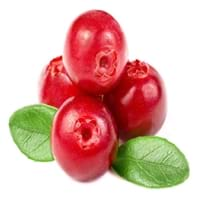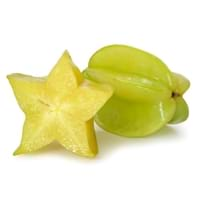Health Benefits
Cancer prevention, Heart care, Kidney stone treatment, Scurvy treatment, Ulcer prevention
Cancer prevention, Heat stroke treatment
General Benefits
Anti-inflammatory properties, Boosts immune system, Digestive aid, Fights against infections, Strengthens bones
Anti oxidant properties, Anti-inflammatory properties, Digestive aid, Maintains healthy cholesterol level, Treatment of sore eyes
Skin Benefits
Anti-aging benefits, Reduces wrinkles, Skin rejuvenation, Treatment of acne
Anti-aging benefits, Heals sunburn, Skin rejuvenation
Hair Benefits
Promotes longer and healthier hair, Protects hair, Treatment of dandruff
Promotes longer and healthier hair, Protects hair
Allergy Symptoms
Anaphylaxis, Breathing difficulty, Itching, Skin rash, Swelling of mouth, tongue or lips
NA
Side Effects
Allergic reaction, Diarrhoea, Nausea, Stomach pain, Vomiting
Nausea, Vomiting
Best Time to Eat
Any time except an hour after meal, Don't consume at night and before bed
As a snack in the late afternoon, Eat the fresh ones, avoid mixing with any other foods, don't eat after meal., Strictly avoid empty stomach
Vitamin B5 (Pantothenic Acid)
Vitamin C (Ascorbic Acid)
Vitamin K (Phyllochinone)
Calories in Fresh Fruit with Peel
Calories in Fresh Fruit without Peel
Not Available
Not Available
Calories in Frozen Form
Not Available
Calories in Canned Form
Not Available
Calories in Jam
Not Available
Calories in Pie
Not Available
Season
Autumn
Autumn, Spring, Summer
Varieties
Early Black, Howes, Ben Lear and Stevens
King, Bell, Sri Kembangan, Arkin and Fwang Tung
Color
Red
Golden yellow, Green
Inside Color
White
Yellowish Green
Shape
Round
Oval and Star(Cross section)
Taste
Bitter, Tart
Crisp, Juicy, Sweet
Origin
North America
Sri Lanka
Grows on
Trees
Not Available
Soil Type
Clay, Sandy, Well-drained
Loam, Well-drained
Climatic Conditions
Warm
Moist, Warm to hot climate
Facts about
- Europeans thought the cranberry blossom looked like the head of a sandhill crane, hence the name Cranberry.
- They are also known as bounce berries as they bounce when they ripe.
- Cranberries do not grow in water.
- When carambola is cut horizontally, it forms a star.
- It is believed that carambola helps to cure hangover.
- Entire carambola is edible, including its skin.
- 2 varieties of carambola are cultivated: tart & sweet.
Top Producer
United States of America
Taiwan
Other Countries
Azerbaijan, Belarus, Bulgaria, Canada, Latvia, Macedonia, NA, Romania, Tunisia, Ukraine
Australia, Guyana, India, Israel, Malaysia, Philippines, United States of America
Top Importer
Europe
Europe
Top Exporter
United States of America
Malaysia
Botanical Name
Vaccinium Macrocarpon
Averrhoa carambola
Synonym
Oxycoccus macrocarpus
Not Available
Subkingdom
Tracheobionta
Tracheobionta
Division
Magnoliophyta
Magnoliophyta
Class
Magnoliopsida
Magnoliopsida
Subclass
Dillenhidae
Rosidae
Order
Ericales
Oxalidales
Family
Ericaceae
Oxalidaceae
Species
Vaccinium macrocarpon
A. carambola
Generic Group
Heath
Not Available
Difference Between Cranberry and Carambola
We might think that Cranberry and Carambola are similar with respect to nutritional value and health benefits. But the nutrient content of both fruits is different. Cranberry and Carambola Facts such as their taste, shape, color, and size are also distinct. The difference between Cranberry and Carambola is explained here.
The amount of calories in 100 gm of fresh Cranberry and Carambola with peel is 46.00 kcal and 31.00 kcal and the amount of calories without peel is Not Available and Not Available respectively. Thus, Cranberry and Carambola belong to and category.These fruits might or might not differ with respect to their scientific classification. The order of Cranberry and Carambola is Ericales and Oxalidales respectively. Cranberry belongs to Ericaceae family and Carambola belongs to Oxalidaceae family. Cranberry belongs to Vaccinium genus of Vaccinium macrocarpon species and Carambola belongs to Averrhoa genus of A. carambola species. Beings plants, both fruits belong to Plantae Kingdom.









